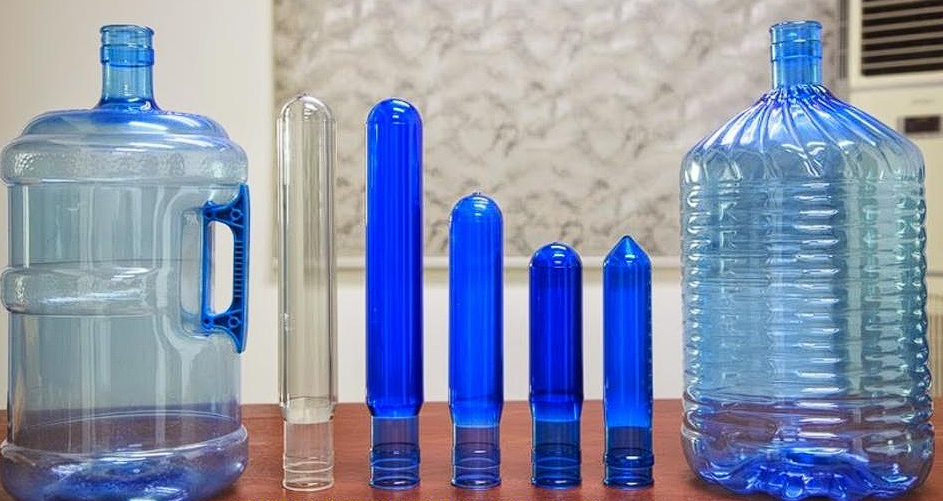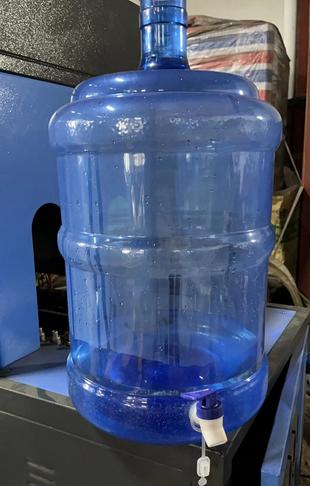
2024.3.9
Making plastic bottles involves blow molding, a crucial process with its challenges. Issues like surface flaws, size differences, and material problems affect quality. We’ll explore these challenges and offer solutions to improve production.

Bottle output may not be at its best if machine parameters don’t change enough. The final product’s overall quality is enhanced by precise settings, which guarantee the proper pressure, temperature, and time.
Machine wear and tear affect a machine’s performance over time. To avoid faults that might lower the quality of plastic bottles, regular maintenance is essential. Rebuilding deteriorated parts is also essential to maintaining steady output.
Keeping the blow molding process running at the proper temperature is essential. Defects like as uneven thickness and deformation are frequently caused by insufficient heating or cooling. Attaining the intended bottle properties requires well-calibrated temperature management.
Raw material quality has a direct impact on the finished product. Selecting premium components lowers the possibility of flaws and improves the plastic bottles’ longevity and attractiveness. Purchasing high-quality materials is an early preventative measure against production problems.
The materials need to be properly dried to remove any moisture before molding. Bubbles and other flaws in the plastic may result from inadequate curing. The overall integrity of the bottles improves by making sure the drying process is completed thoroughly.
Impurities introduced into the plastic by contaminated ingredients can cause problems. To avoid contamination problems during the blow molding process, strict material purity checks are necessarily performed.
The preform, a precursor to the final bottle, requires careful handling. Mishandling can cause distortions or defects in the bottles. Training operators to handle preforms with precision is crucial for maintaining the quality of the blow molding process.
Precise parameters, including pressure and timing, are fundamental for achieving the desired bottle characteristics. Inaccuracies in these parameters can lead to dimensional variations and defects. Regular monitoring and adjustments ensure optimal blow molding conditions.
Understanding these problems is crucial in maintaining high standards within the plastic bottle manufacturing niche.
Surface imperfections, such as scratches or blemishes, compromise the aesthetic appeal of plastic bottles. Employing careful handling procedures and regular maintenance minimizes the risk of these imperfections, ensuring a flawless exterior.
Inconsistent thickness in plastic bottles can lead to structural weaknesses and uneven distribution of weight. Implementing precise machine settings and meticulous material control safeguards against non-uniform thickness issues, enhancing the overall strength of the bottles.
Clarity and transparency are vital for displaying the contents of plastic bottles. Material quality and proper drying techniques contribute to the clear appearance, preventing cloudiness or haziness in the final product.
Uneven wall thickness compromises the structural integrity of plastic bottles. Regular monitoring and adjustment of machine parameters ensure consistent wall thickness, creating bottles that are both durable and aesthetically pleasing.
Misshapen bottles, with irregular forms or deformities, can result from imprecise molding parameters. Implementing accurate blow molding settings and maintaining machinery prevent misshapen bottles, preserving the desired shape and functionality.
The neck of a bottle is a critical component, and inaccuracies can lead to issues with closures. Ensuring precise molding parameters and careful handling of preforms contribute to accurate neck finishes, preventing problems with bottle closures.
Contaminated materials introduce impurities into plastic bottles, affecting both appearance and functionality. Rigorous checks for material purity and proper storage prevent contamination, maintaining the quality of the end product.
Uneven distribution of materials can result in localized weaknesses or variations in bottle properties. Implementing proper drying techniques and meticulous material handling ensures consistent material distribution throughout the blow molding process.
Over time, materials can degrade, affecting the quality of plastic bottles. Using high-quality materials and monitoring for signs of degradation contribute to the longevity and performance of the final product.

Conducting routine maintenance and calibration procedures is essential for keeping machinery in optimal condition. This prevents wear and tear, reducing the risk of defects and ensuring consistent, high-quality plastic bottles.
Investing in modern machinery with advanced features enhances the precision and efficiency of the blow molding process. Upgrading outdated equipment minimizes the likelihood of errors, contributing to improved overall production quality.
Tailoring machine settings to the specific requirements of each production run is crucial. This optimization prevents defects, such as non-uniform thickness or surface imperfections, resulting in plastic bottles that meet exact specifications.
Choosing premium materials is a proactive solution to combat material-related issues. High-quality materials contribute to the durability and appearance of plastic bottles, reducing the risk of defects and ensuring a desirable end product.
Implementing meticulous material drying techniques and careful handling procedures prevents issues like poor clarity or contamination. These steps maintain the integrity of materials throughout the blow molding process, resulting in clear and flawless bottles.
Regular checks for material purity help identify and eliminate potential contaminants. Implementing stringent material purity measures ensures that the raw materials meet the required standards, minimizing the risk of defects in the final product.
Well-trained operators are essential for successful blow molding. Providing thorough training and continuous education enhances operator skills, reducing the likelihood of errors and contributing to consistently high-quality plastic bottles.
Rigorous quality control measures during the entire production process help identify and rectify issues promptly. This proactive approach ensures that dimensional variations and defects are minimized, maintaining the desired quality of plastic bottles.
Incorporating advanced monitoring and automation technologies enables real-time tracking and adjustments. This enhances process control, reduces human error, and ensures optimal conditions throughout the blow molding process, resulting in consistently high-quality products.
To sum up, succeeding in plastic bottle making requires knowing common issues and fixes. By fixing machine problems and refining materials and methods, the industry can raise its game. Regular upkeep, good materials, and better monitoring tech are vital. Adapting to these solutions ensures high-quality bottles, meeting both industry and customer needs.